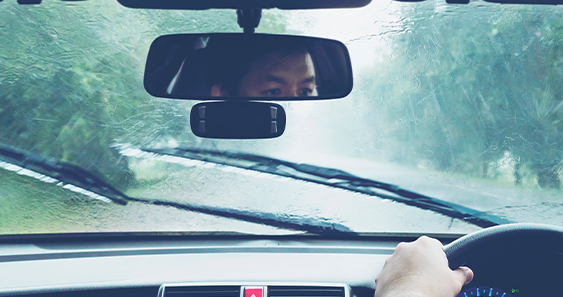ADAS or ‘advanced driver assistance systems,’ are a series of safety and convenience features which are installed in most modern vehicles. Ranging from parking assistance features to automatic steering and speed adjustment, ADAS features are constantly evolving to make our lives behind the wheel easier and safer.
These features work using a series of sensors, radar, and cameras, which all need to be finely attuned to work as intended.
Defining ADAS windscreen calibration
ADAS windscreen calibration is the process of adjusting the cameras attached to a vehicle’s windscreen. This is to ensure that the data your ADAS features are collecting and using are completely accurate to ensure safety and maximum convenience.
Usually, windscreen cameras are fitted to the center of your windscreen, and this camera will send information and data to the various systems to help work safety features. Calibration will ensure that the camera is perfectly centered, and pointing straight ahead, to provide absolute accuracy.
ADAS windscreen features
Different ADAS features utilise different cameras or sensors (or multiple!), some systems which use windscreen cameras include:
- Traffic sign recognition – Your windscreen camera will read traffic signs, lights and crossings to then display this information to the driver, increasing convenience and safety. For example, this display might include the local speed limit, or if there is a speed camera up ahead.
- Lane assist – This ADAS will likely use multiple cameras and sensors, but it does employ the front facing windscreen camera. This system detects if a vehicle is slowly (and unintentionally) leaving its lane. Then, depending on the exact features your vehicle has, it will either use an alarm to alert you of the danger, or even automatically intervene to correct the error and avoid a potentially dangerous situation.
- Forward collision warning – This camera-based system alerts the driver to immediate danger through beeps and buzzes. This gives drivers extra time to react and avoid dangerous situations.
- Adaptive headlights – Windscreen cameras can help to adjust the intensity of headlights to increase visibility when safe to do so, but also automatically turn off high beams when approaching an oncoming vehicle.

Is ADAS windscreen calibration important?
ADAS windscreen calibration is very important. Without it, you can’t be sure that your vehicle’s systems are working properly, which could even lead to dangerous scenarios for the driver and for other road users.
Misaligned cameras, which can be caused after a windscreen replacement, can cause inaccurate information being relayed to ADAS, compromising safety and performance.
Many people wrongly believe that poorly calibrated sensors and cameras will simply not work, or turn off. This is not true, in fact, they will keep ‘working’ but in a way that is inaccurate and therefore unsafe. This could lead to a few different things happening, such as:
- False alarms
- Missed warnings
- Incorrect interventions
False alarms can be distracting to a driver, who may end up looking for an obstacle or danger which is not present. Missed warnings can be dangerous in the opposite way, drivers don’t notice danger that their systems should, and normally would, flag.
Incorrect interventions are perhaps the most concerning of all, improperly calibrated systems may actually take control of your vehicle, performing wrongful emergency stops, or steering corrections which can prove fatal.
Will I need ADAS calibration after a windscreen replacement?
Yes, you will definitely need ADAS calibration after a windscreen replacement. This is because having a windscreen replacement requires many ADAS sensors and cameras to be disconnected, or even dismounted, so that they aren’t in the way of the replacement. This, for obvious reasons, is likely to affect the accuracy of these systems.
On top of this, the new glass which is installed may be slightly thicker, thinner, or even differently positioned than the original windscreen. Even if the difference is mere millimeters, this can have a huge impact on the accuracy and safety of ADAS.
You should also book an ADAS calibration after an accident or a collision, wheel alignment or suspension work, software updates, or if you notice any inconsistencies or false alarms from your car.
Furthermore, it is generally recommended to get a calibration at least once a year.
How does ADAS calibration work?
ADAS calibration must be performed by a professional, and there are two types of calibration:
- Dynamic calibration is carried out whilst your vehicle is in motion. A hand-held calibration device is connected to your vehicle, and driven through a predetermined route in varying conditions. This is so your vehicle can be calibrated to deal with different weather and road conditions, increasing overall accuracy and safety.
- Static calibration is performed in a controlled environment such as a garage or workshop. Using specialist equipment, your specialist will adjust cameras and sensors to ensure total accuracy. This helps to streamline the driving process and restore proper function of all systems.
Static calibration is generally cheaper and faster than dynamic, but also slightly less accurate. Whilst still a safe option for restoring fully functional ADAS features, static calibration may not garner quite the same results as dynamic.
How much does ADAS windscreen calibration cost?
ADAS calibration prices are likely to vary based on your vehicle, its condition, and what type of calibration you opt for.
At LADAS, we offer competitive prices and outstanding service to ensure that your systems are up to scratch. Be sure to contact us to find out more.

